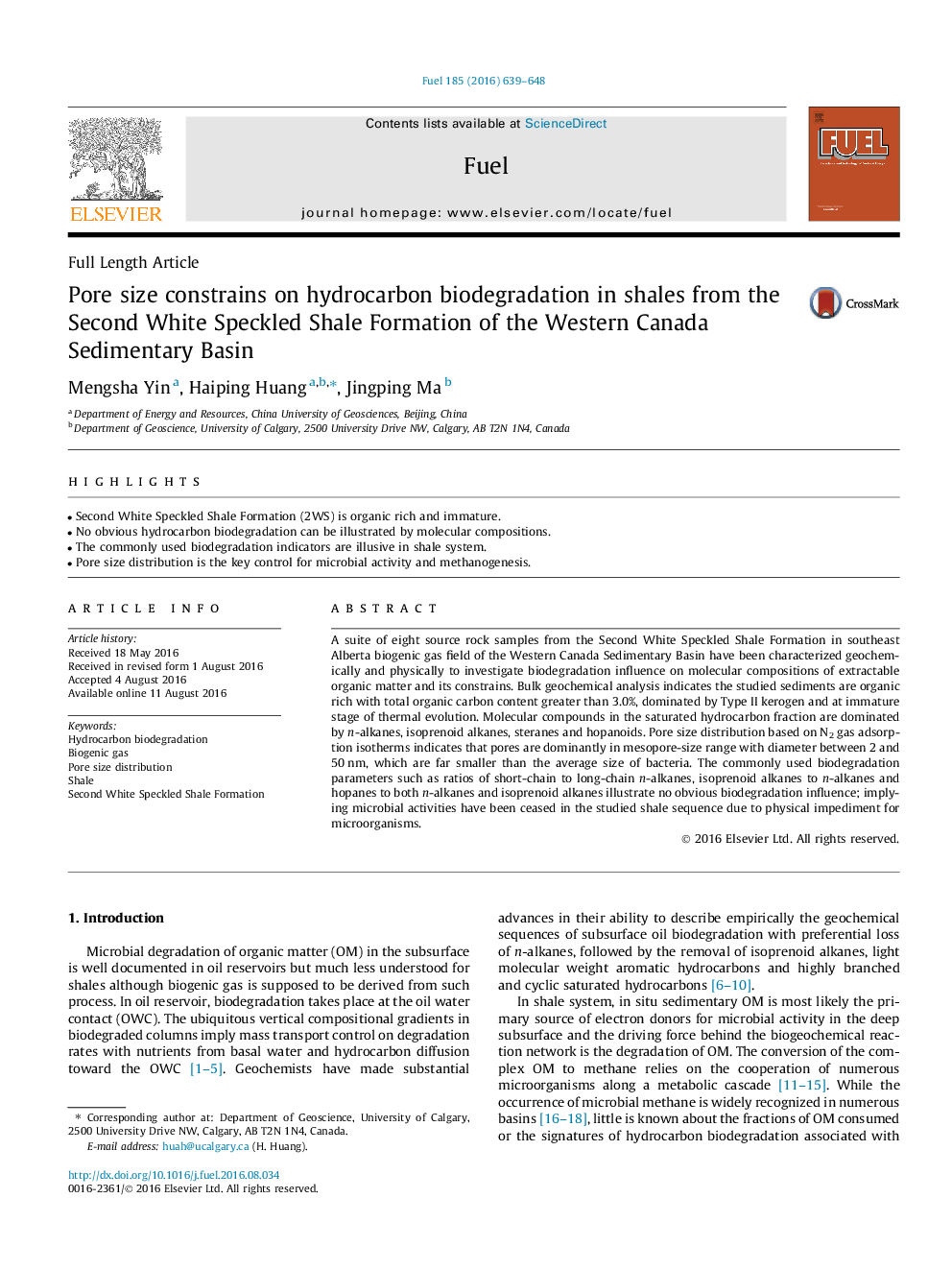| Article ID | Journal | Published Year | Pages | File Type |
|---|---|---|---|---|
| 6632857 | Fuel | 2016 | 10 Pages |
Abstract
A suite of eight source rock samples from the Second White Speckled Shale Formation in southeast Alberta biogenic gas field of the Western Canada Sedimentary Basin have been characterized geochemically and physically to investigate biodegradation influence on molecular compositions of extractable organic matter and its constrains. Bulk geochemical analysis indicates the studied sediments are organic rich with total organic carbon content greater than 3.0%, dominated by Type II kerogen and at immature stage of thermal evolution. Molecular compounds in the saturated hydrocarbon fraction are dominated by n-alkanes, isoprenoid alkanes, steranes and hopanoids. Pore size distribution based on N2 gas adsorption isotherms indicates that pores are dominantly in mesopore-size range with diameter between 2 and 50Â nm, which are far smaller than the average size of bacteria. The commonly used biodegradation parameters such as ratios of short-chain to long-chain n-alkanes, isoprenoid alkanes to n-alkanes and hopanes to both n-alkanes and isoprenoid alkanes illustrate no obvious biodegradation influence; implying microbial activities have been ceased in the studied shale sequence due to physical impediment for microorganisms.
Related Topics
Physical Sciences and Engineering
Chemical Engineering
Chemical Engineering (General)
Authors
Mengsha Yin, Haiping Huang, Jingping Ma,
